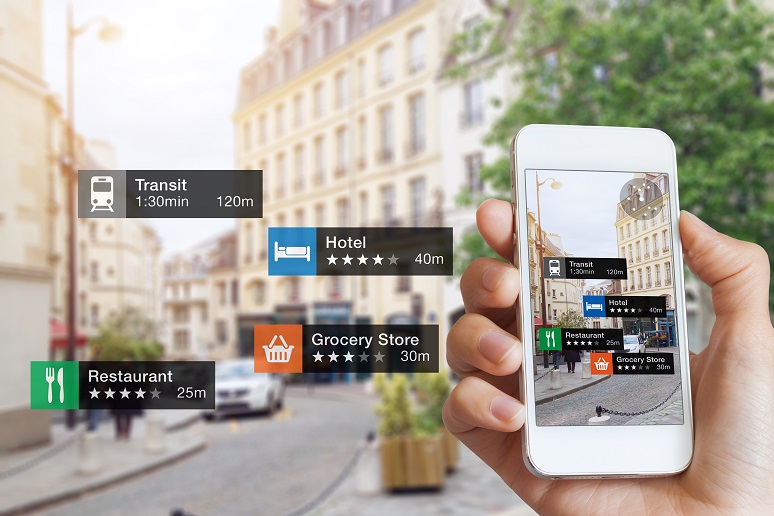Augmented Reality (AR) has risen to prominence in 2020. The pandemic has served as an unexpected catalyst for the adoption of AR to assist with processes ranging from the online and in-store consumer shopping experience to enabling bi-directional marketing to individual consumers. Our new way of working, collaborating, engaging, and communicating with employees and consumers has brought the benefits of a simulated environment to light.
AR’s significance lies in its ability to overlay and share physical objects, spaces, and images on a user’s view of the real world. It creates a digital environment and transforms the customer journey into an immersive visual interactive experience. By enabling digital information to be superimposed and integrated into the physical environment, AR helps transform consumers’ immediate surroundings into learning, work, and entertainment spaces. As such, it builds a bridge between two-dimensional technology and the three-dimensional world in which we live.
Consequently, these capabilities place AR at the very forefront of a transformation that will impact customer and brand engagement, e-commerce, field service, workplace strategies, and the overall business. This interchange has opened a world of possibilities and innovations for enterprises across all industries.
Consumers can search for information, for example, just by visualizing an object or concept rather than clicking through pages online. When reporting issues or product malfunctions, customers can simply present the object, like a cable box that isn’t working, to a technician who can’t only see the issue on their end, but also the complete history of the relationship with the communications service provider and the customer.
Several verticals, including retail, healthcare, travel, public safety, banking, and manufacturing, already share a range of use cases with AR, including conducting remote training of agents and making medical diagnoses. The greatest impact of AR, however, will be felt in marketing, E-commerce, and service. That’s where it will enhance the customer experience by enabling data-rich, contextual, predictive, and interactive experiences that will allow consumers to visualize products while interacting with them, “try on” apparel, or experience events and places.
Here are some commercial use case examples of how AR is being utilized:
- Westpac Bank in New Zealand offers an AR mobile app with interactive features that enable customers to manage their bank accounts. One of the capabilities allows customers to scan their debit or credit cards with their phone’s camera to allow them to see and manage their accounts.
- “Ask Mercedes” is the automotive company’s AR app that virtually assists customers and answers questions about their new vehicles.
- Warby Parker uses a combination of AI, VR, and AR to recommend glasses through an infrared camera that takes photos of people’s faces.
These commercial use cases, as well as COVID-19’s push to digital, will inevitably further accelerate investments in the coming months. Omdia’s research substantiates investments planned in AR for customer enablement over the remainder of 2020 and 2021. In our ICT Enterprise Insights Global Survey of more than 4,800 IT professionals, 61% of respondents said they have significant or minor investments planned for 2020, with 24% said they have strategic investments planned, and 37% said they have minor investments.
While commercial use cases and investment plans highlight AR’s potential to transform the customer experience, they also call into question how enterprises plan to implement AR into their business operations framework in order to fuel next-generation experiences that drive brand loyalty through customer engagement. Once enterprises grasp a better understanding of the various technologies needed to create the AR ecosystem, it will accelerate AR adoption for the customer experience and the AR-enabled enterprise will take shape.
As AR-enabled CX moves from having a moment in the spotlight to becoming a value-added enhancement to CX applications, enterprises across all sectors must determine long-term strategies that encompass all areas of their organizations. From providing real-time information for employees to enabling field service to provide remote support and helping marketers to provide contextual offers and experiences, the AR-enabled enterprise is a not-so-distant reality.
My full report, Market Landscape: The Augmented Reality (AR)-Enabled Customer Experience, explores the eight key market dynamics that will give a lift to AR in 2021, additional industry use cases, the market status, and the geographic market outlook. Go to www.omdia.com to learn more.










